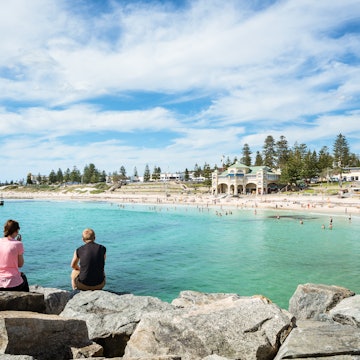

'The road is life,' wrote seminal American author Jack Kerouac in the 1950s, inadvertently summing up Cuba's post-Special Period transport system in just four words. The ways in which Cubans get around, often quirky, anachronistic and on hybrid machines cobbled together with amazing ingenuity, drives to the heart of the often inscrutable ways of Cuban daily life.
The Cold War in a car
Aided by some of the world's most creative mechanics, Cuba has long acted as a giant recycling plant for old American cars. The ailing dowagers of Detroit hark back to a brighter, more streamlined age when gas was cheap and a soft-top Oldsmobile was every aspiring teenager's ticket to freedom.
All very romantic, of course; until you find out that one in four cars in Cuba aren't American at all, they're Russian. Even worse, they're Ladas. And of the ones that aren't (the vintage American ones, that is), a good proportion have Lada engines.
An ugly cousin of the Fiat 124 Sedan, the Lada – or VAZ-2101, to give it its proper name – was first concocted in Tolyatti on the banks of the Volga River in 1966. Economical but unattractive, they quickly became a source of ridicule for leery car connoisseurs, most of whom would have rather walked 100 miles than be seen behind the wheel of one.
In Cuba, the reception was a little more enthusiastic. Readily available thanks to a solid economic alliance with the Soviet Union, Ladas quickly became prized possessions in the 1970s and '80s, when they were handed out to model workers as reward for exemplary conduct. Not surprisingly, the car's rugged but ruthlessly efficient VAZ engineering did well on the island's potholed roads and the vehicles prevailed – if not always in the lovingly restored state of their American counterparts.
Ladas today serve multiple purposes in Cuba's hard-to-fathom car economy. Some work industriously as taxis, while others find themselves broken down into their component parts and used to power anything from washing machines to 1951 Plymouths.
The greatest of all – the classic 'Stretch' – is a peculiarly Cuban invention concocted by hard-up taxi drivers during the 1990s. Armed with blow torches, metal bashers and exceedingly lucid imaginations, these deft DIY kings set out to successfully create one of the world's greatest motoring oxymorons – the Lada limo.

Cuba and the art of motorcycle maintenance
While the cars are the stars of most Cuban photo-spreads, spare a thought for the luckless motorbikes, or more appropriately, the Harley-Davidsons. Yes, Cuba has a credible stock of America’s great two-wheeled gift to the world (between 80 and 100 at last count), all of them predating 1959, and 95% of them hybridized – rather like the nation’s cars, fridges, and washing machines – with foreign mechanical bodies.
Harleys first arrived in Cuba in the 1920s and they quickly became a common sight on the streets of Havana where they were adopted by the Cuban police force. But, with the advent of the travel ban in 1962 and the ending of regular contacts with US aficionados, imports dried up. The community might have died out all together if it hadn’t been for the work and ingenuity of one man, José ‘Pepe’ Lorenzo Cortes. Cortes was an amateur mechanic and bike lover whose unspoken motto was ‘what you can’t buy, make’. His mission to rescue old Harleys in the 70s and 80s, with deft cannibalization techniques raised a whole new generation of bike enthusiasts happy to follow in their father’s or grandfather’s tire tracks.
Cuba’s Harlistas are a burly but congenial brigade partial, like most ‘Hogs’ (Harley Owner Groups), to their organized get-togethers. Top billing comes in June on the Día del Motorista Ausente (Day of the Absent Motorcyclist) when the majority of the nation’s 100+ riders converge on the Cemeterio Colón in Havana to honor their mentor, the late Cortes, before riding off into the sunset.

Advertising the Revolution
For visitors from capitalist countries, spoon-fed with advertising from the cradle to the grave, Cuba offers a refreshing alternative. Here in the land of zero commercialization, where mail is junk free, and the word ‘spam’ is usually used to describe the country’s favorite sandwich filling, the only company allowed to advertise is the government.
Tub-thumping billboards harnessed for government marketing campaigns are ubiquitous in Cuba. But, although the political rhetoric is grating and repetitive, the accompanying art is anything but. Noted Cuban artist Raúl Martínez took billboard and poster art into the mainstream in the 1960s with colorful and eye-catching images that forced people to look up and take notice, even if they didn’t buy the message.
Some political graffiti in Cuba is generic. Seen everywhere are the words, En cada barrio revolución (In every neighborhood, revolution), the slogan of the CDR. Volverán (They will come back) is the ongoing shout-out of the campaign to release the five Cuban government agents held in US jails. Siempre es 26 is an allusion to the Moncada barracks attack on July 26th 1953.
Other less common signs have become like mini-tourist attractions. 'Señores imperialistas; no les tenemos absolutamente ningun miedo!' (Mr. Imperialists, we have absolutely no fear of you!) hangs just outside the US Special Interests Office on Havana’s Malecón. 'Guantánamo tiene que tenia que tener' (Guantánamo has what it had to have) sits close to the US airbase.

Legalized hitchhiking
Hitchhiking around the country with the amarillos, the state-sanctioned traffic officials (so named for their mustard-yellow uniforms), is about as real life as Cuba gets. To do it you'll need oodles of patience, a dry sense of humor and an innate ability to wait interminably at the side of the road for hours on end. In the process, it could turn out to be your greatest in-country adventure or your worst Cuban nightmare.
Thanks to the transport crisis, hacer botella (hitchhiking) using the amarillo system is legally enforced. All cars with blue (government-owned) license plates are obliged to stop and take on passengers if they have room. Drivers who unsocialistically whizz past risk a stiff fine.
Far from being a desperation measure for impoverished backpackers, hitch-hiking is the preserve of everyone from doctors to students who gather patiently by the highway to trade gossip, grumbles, jokes and jibes. Caught up in the melee, your tales from the road will rarely be dull. Fatefully, you might spend your morning sitting Houdini-like in the backseat of a Fiat Uno, and the afternoon wedged cheek to jowl in a camión particular (private truck). Alternatively, there are the easy days when a plush new tour coach pulls up fresh from dumping its wealthy tourist cargo in an expensive north-coast all-inclusive and invites you to step on board. Ah, if only life could always be so serendipitous!














